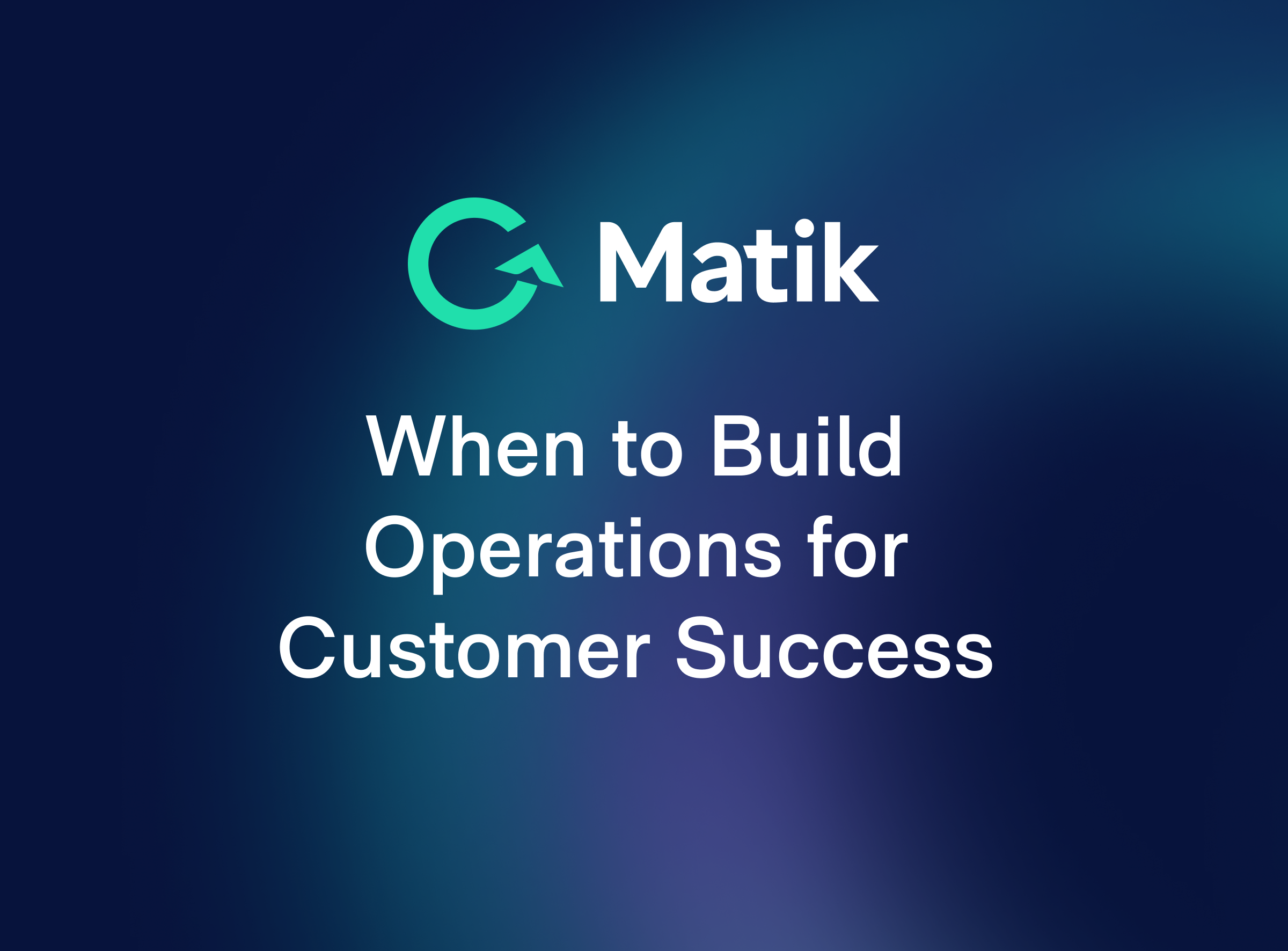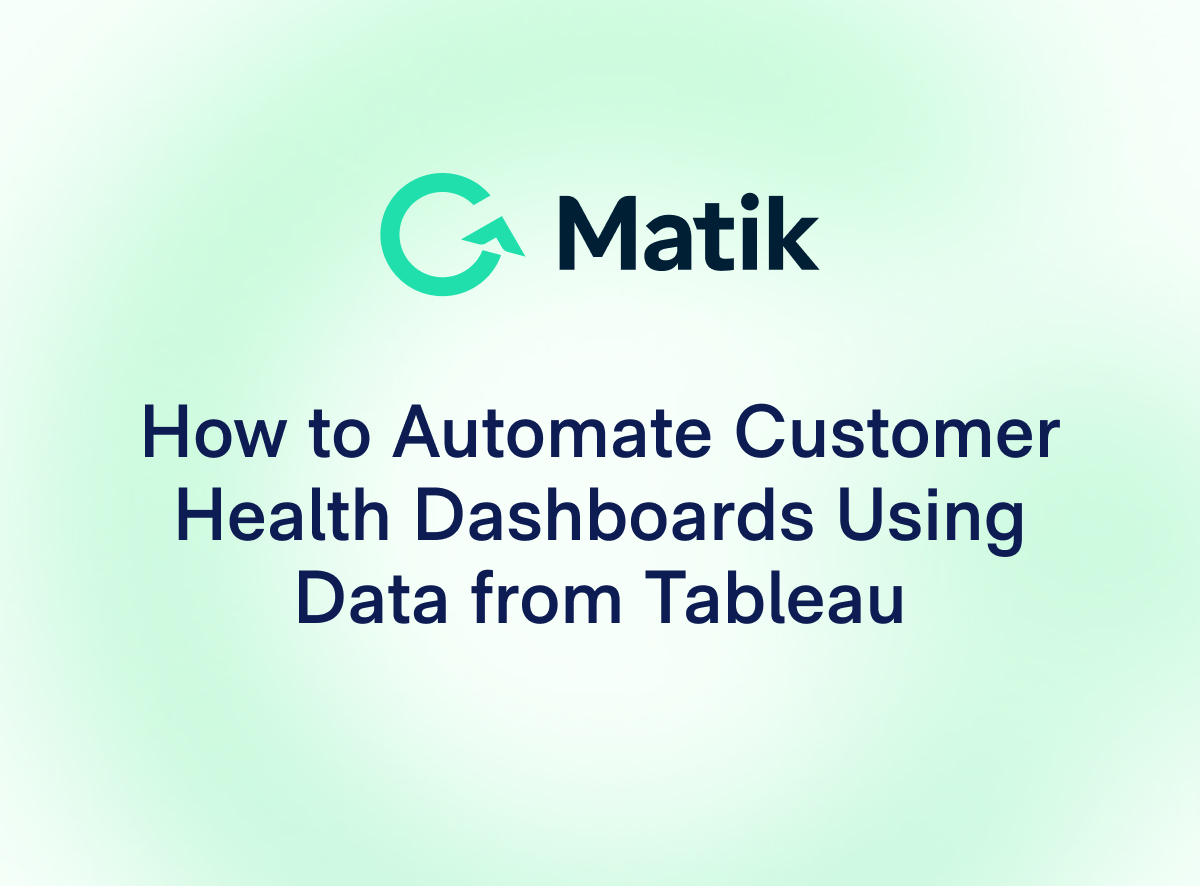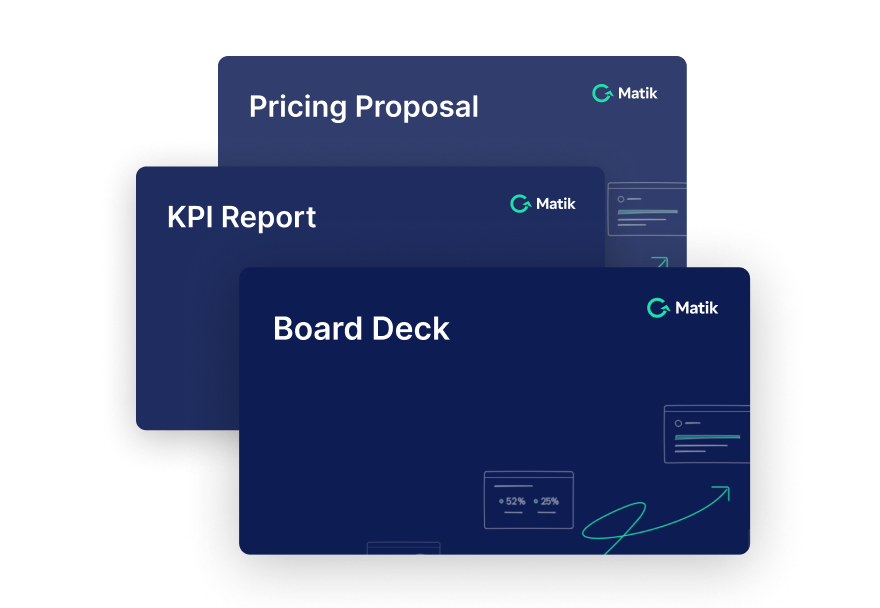Join Our Newsletter
At many SaaS companies, Customer Success starts strong with hustle, heart, and a handful of generalists who do it all. For a while, that works. But as the business grows, complexity starts to creep in. Teams get stretched. Processes become inconsistent. Data lives everywhere and nowhere. Eventually, the ability to deliver a great customer experience begins to slip.
This is the moment where many companies ask the question: “Are we ready for CS Ops?”
In most cases, the answer is yes and probably has been for a while.
Customer Success Operations is not just for large enterprises with mature org charts. Even one person with part-time ownership can unlock meaningful improvements.
The earlier you invest, the easier it is to scale without losing your grip on quality, efficiency, and growth.
How to Know When It's Time to Build CS Ops
Here are some of the clearest signs you are ready to build operations for Customer Success:
1. Manual Work Is Eating Your CSMs’ Time
If your CSMs are spending more time building QBR decks, pulling customer data, or updating spreadsheets than they are working with customers, that is a red flag. CS Ops can take on the busywork by automating reporting, standardizing workflows, and creating self-serve tools that give time back to the team.
2. Data and Reporting Is a Struggle
If reporting on churn risk, expansion, or renewal forecasts requires spreadsheet gymnastics, it becomes harder to make smart decisions. Health scores start to feel like guesswork. CS Ops brings structure to your data and makes insights accessible, reliable, and consistent across the team.
3. Handoffs Feel Disjointed
As customers move between Sales, CS, Support, and Product, information gets lost. When there is no shared view of the customer journey, it leads to confusion, duplicated efforts, or missed follow-ups. CS Ops helps create smoother transitions and more consistent experiences by aligning teams and tools.
4. Team Size and Complexity Is Increasing
If your CS team has grown beyond a handful of generalists, you may be segmenting by account type, product line, or region. As this complexity increases, so does the need for shared systems, clear processes, and scalable infrastructure. CS Ops brings order to the chaos as your team scales.
5. Leadership Wants Predictability
If your executive team or board is asking for accurate renewal forecasts, churn insights, or consistent retention reporting, your CS function needs operational support. CS Ops provides the structure to deliver reliable metrics and enable data-informed decisions.
Don’t Wait for the Perfect Moment
You don’t need a complex org chart or a massive team to start building Customer Success Operations. In fact, the earlier you start, the more value you unlock.
CS Ops is what allows you to scale with confidence. It brings clarity to your data, structure to your processes, and consistency to the customer experience.
Want to learn how to build a scalable CS Ops function?
Our free ebook, “How to Build an Operations Strategy for Customer Success,” breaks this down step-by-step with practical tips, examples, and pitfalls to avoid. Download the ebook here to learn how leading CS teams are using CS Ops to power customer growth and retention.
---
Ready to transform your organization? Request a demo with Matik today!














